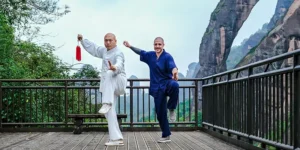Tai Chi, an ancient Chinese martial art, is more than just a self-defense practice—it’s a holistic exercise combining slow, graceful movements with mindfulness and breath control. Often described as “meditation in motion,” Tai Chi martial art is accessible to people of all ages and fitness levels. Whether you’re a curious teenager, a busy adult, or a senior looking to improve balance, Tai Chi (Taijiquan) is a gentle yet powerful martial art that improves balance, strength, and mental clarity.
What Is Tai Chi Martial Arts?
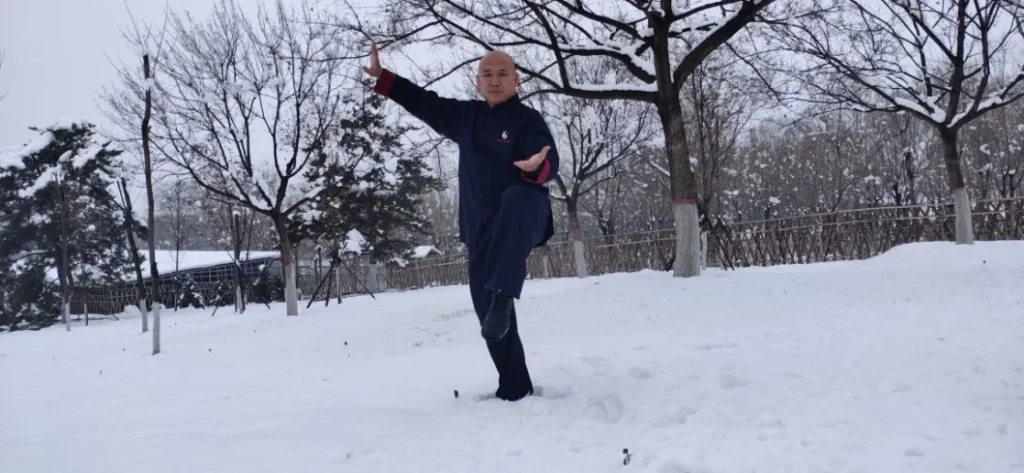
Tai Chi is one of the Chinese martial arts. Each movement of Tai Chi is circular, just like the Tai Chi diagram. In these circular movements, there are many changes, such as virtuality and reality, movement and stillness, hardness and softness, advance and retreat, etc.
Tai Chi movements are from the starting posture to the closing posture; one posture is connected to another without any interruption, like a complete circle, with no beginning or end. The ancients called this circular movement boxing “Tai Chi”.
Types of Tai Chi Styles
- Yang Style (Slow & graceful)
- Chen Style (Faster movements, martial focus)
- Wu Style (Compact, small movements)
- Sun Style (Gentle, great for seniors)
Tai Chi originated in ancient China as a slow, flowing martial art that combines self-defense techniques, breath control, and mindfulness. Unlike fast-paced martial arts, Tai Chi is low-impact—perfect for beginners of every age and fitness level.
Why Tai Chi Benifits All Ages?
Tai Chi (Taijiquan) is not just an ancient martial art—it’s a lifelong wellness practice suitable for children, adults, and seniors. Combining slow movements with deep breathing and mindfulness, Tai Chi offers physical, mental, and emotional benefits that adapt to every age group.
Whether you’re searching for “tai chi near me” for your child, a “tai chi class for beginners”, or senior-friendly tai chi exercises, we’ve got your covered.
| Age Period | Benefits | Value |
| Kids and Teens | Building Focus and Coordination | Improves Concentration – Helps students focus better in schoolEnhances Balance & Coordination – Great for young athletesReduces Stress & Anxiety – A natural way to manage academic pressureTeaches Discipline – Develops patience and self-control |
| Adults | Stress Relief & Physical Fitness | Decreases Workplace Stress – Mindful movement lowers cortisol levelsImproves Joint & Back Health – Gentle on the body, reduces stiffnessBoosts Cardiovascular Health – Enhances circulation without high impactEnhances Flexibility & Strength – A full-body workout without weights |
| Seniors | Balance, Mobility & Longevity | Prevents Falls – Research shows Tai Chi reduces fall risk by 50%Eases Arthritis & Joint Pain – Slow movements lubricate jointsSupports Heart & Lung Health – Gentle aerobic exercise with deep breathingEnhances Memory & Cognitive Function – Studies link Tai Chi to reduced dementia risk |
Studies show Tai Chi reduces fall risk in seniors by 50% while enhancing agility in younger practitioners. Beginners can start with simplified forms like the 8- or 24-posture Yang style, then progress to advanced routines or even sparring as skills grow.
How Tai Chi Adapts To All Ages And Physical Abilities
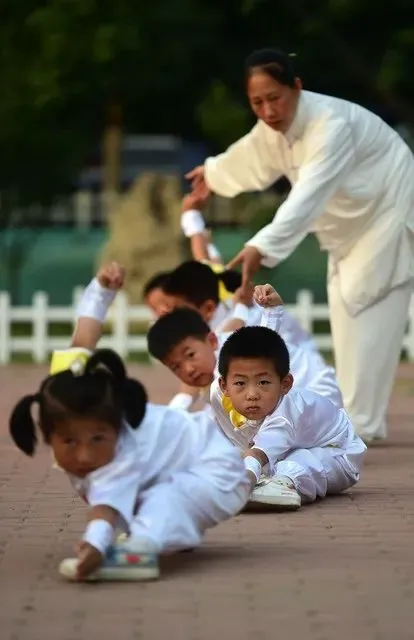
As a “smart sport”, Tai Chi can perfectly adapt to all age groups from children to the elderly by adjusting the practice method and intensity.
Children and Teenagers (5-18 years old)
- Movements: Simplified routines (such as Tai Chi Eight Postures) combined with gamified exercises, emphasizing coordination training.
- Physical adaptation:
- Use “Cloud Hands” and “Lou Xi Ao Bu” and other movements to improve scoliosis and hunchback problems.
- Dynamic standing exercises enhance lower limb strength and promote bone development.
Adults (19-60 years old)
- Movements: Standardized routines (such as 24-posture simplified Tai Chi) combined with breathing training.
- Physical adaptation:
- Spiral winding movements improve cervical stiffness in office workers.
- The virtual and real footwork training consumes about 200kcal/h of calories, which is equivalent to the metabolic level of brisk walking.
Senior (60+)
- Movements: Elevated exercises + auxiliary equipment (Tai Chi ruler, wall support).
- Physical adaptation:
- Single-leg support movements (such as “Golden Rooster Stand”) use a 70% knee flexion angle to reduce joint pressure.
- The center of gravity conversion speed is controlled within 0.5m/s, which is in line with the nerve reflex speed of the elderly.
Chen Style Tai Chi: Wushu and Health
Chen Style Tai Chi, the oldest and most martial of the five major Tai Chi families, uniquely bridges the gap between dynamic combat techniques and holistic wellness.
Originating in the 17th century from Chen Village (Henan, China), this style combines explosive power, silk-reeling spirals, and slow-flowing forms to create a practice that strengthens both body and mind.
Whether you’re drawn to its self-defense applications or its health-boosting potential, here’s how Chen Style Tai Chi delivers martial prowess and vitality in equal measure.
Chen Tai Chi as Authentic Wushu
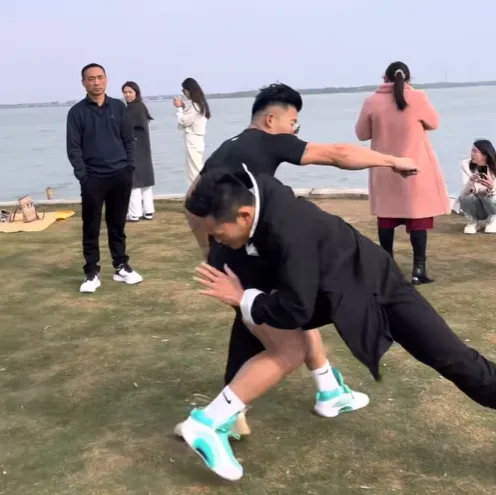
Unlike gentler Tai Chi styles, Chen retains its battlefield through:
Like “Buddha’s Warrior Pounding Mortar” train whole-body coordination for strikes. Chen practitioners generate 30% more ground reaction force than Yang-style counterparts (Journal of Sports Science).
Spiral rotations in every joint mimic unwinding silk threads, enhancing joint stability and strike penetration. Example: “Lazily Tying Coat” uses hip-driven spirals to deflect attacks while loading counterstrikes.
Chen-style sensitivity drills include “Dalu” (large rollback) for destabilizing opponents, used in MMA cross-training.
Combat-Driven Forms
- First Routine (Yi Lu): Low stances and clear martial applications for foundational training.
- Second Routine (Pao Chui): Fast-paced, jumping movements mimicking battlefield adaptability.
Chen Tai Chi for Health And Longevity
While fiercely martial, Chen Tai Chi is also a powerful health system, balancing qi (energy), strength, and flexibility.
The alternating slow-fast pace boosts heart rate variability (HRV), reducing cardiac risk by 22% (American Heart Association).
- Key Move: “Green Dragon Emerges from Water” combines deep squats with rapid arm extensions.
Silk-reeling motions increase synovial fluid production, easing arthritis pain by 40%.
- Example: Replace “Low Snake Creeps Down” with half-squats for knee protection.
Complex coordination patterns stimulate cerebellum activity, improving multitasking in adults over 50 (NIH study).
- Practice “Single Whip” while counting backward to enhance cognitive load.
Explosive fajin releases cortisol 18% faster than meditation alone.
Best Way To Start Chen Style Tai Chi
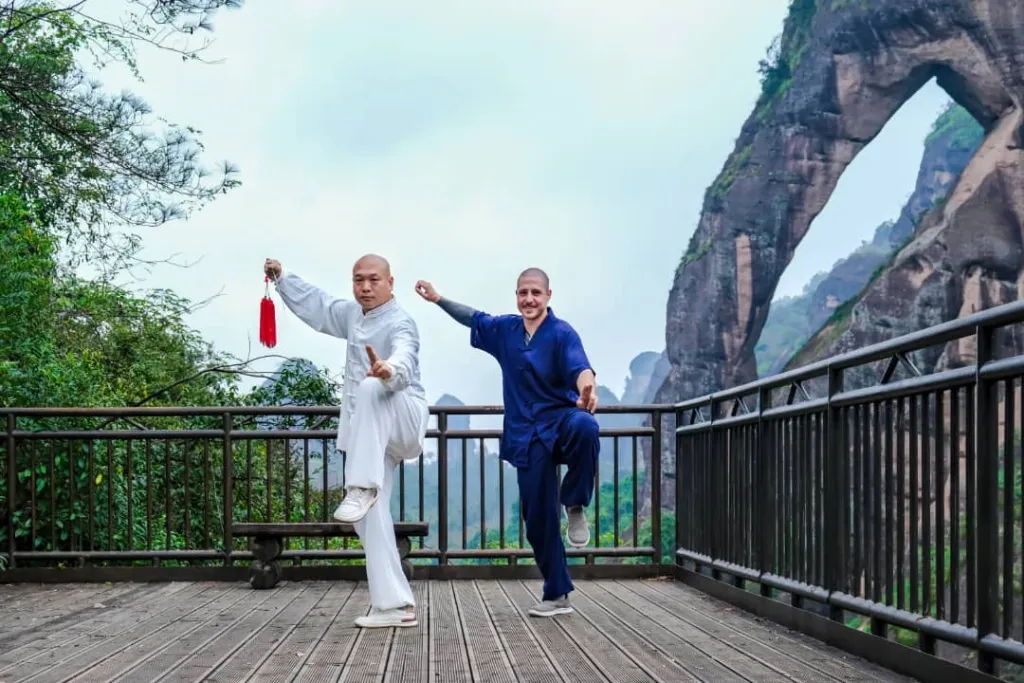
Why do you want to learn Chen Tai Chi? Because Chen Tai Chi is a combination of martial arts, philosophy and health. Moreover, Chen Tai Chi is the root of all Tai Chi schools. Learning it is equivalent to directly contacting the most traditional and ancient Tai Chi, not the modern simplified version. Chen Tai Chi is the best choice for exercising “fist” and “spirit”.
Authoritative institution:
Shen Jiangfei Internatioal Martial Arts School
Advantages of on-site learning:
- 7 hours of immersive training per day (including theory classes, standing exercises, routines, and pushing hands)
- Experience the culture of “family-inherited boxing” (such as ethnic customs and family history)
Course Options
Chen Tai Chi courses include summer camps and regular courses:
| Regular Courses | |||
| Term | Courses | Fee | Gift |
| 1-3 months | Tai Chi Eight Moves, Basic Skills Training, Tai Chi Optional Boxing, Shaolin Serial Fist, Fighting Skills | ¥12000/month | training clothes, scenic area ticket |
| 4-6 months | Tai Chi Eight Moves, Basic Skills Training, Tai Chi Optional Boxing, Shaolin Serial Fist, Fighting Skills, Chen-Style Tai Chi First Move, Tai Chi Pile Standing, Tai Chi Sword, Tai Chi Blade, Practical Application | ¥10500/month | 2 training clothes, scenic area ticket, Longhu Mountain sightseeing, a set of souvenir |
| A full year | Chen-Style Tai Chi First Move, Tai Chi Pile Standing, Tai Chi Sword, Tai Chi Blade, Chen-Style Tai Chi Second Move, Practical Application of Tai Chi, Tai Chi combat, Tai Chi Catching and Anti – Catching, Tai Chi Pushing Hands, Defense, Free Fight, Tai Chi Spear | ¥9000/month | 4 sets of training clothes (two sets for autumn and winter, two sets for spring and summer), scenic area ticket, Longhu Mountain sightseeing, a set of souvenir |
| Summer Camp | |||
| Period | Fees | Age Range | Schedule |
| From 12 July to 12 August every year | ¥9600/period | 8-16 years old | Get up at 6:00 a.m.6:20-7:20 morning class7:50 breakfast.9:00-9:50 a.m. Learn Chinese traditional culture10:10-11:30 a.m. Summer homework11:50 a.m. Lunch.3:00-6:10 p.m. Martial arts class.6:30 p.m. Dinner.9:30 p.m. Go to bed. |
Chen Tai Chi is one of the few martial arts that simultaneously cultivates internal energy, combat skill, and longevity. Whether you seek health improvement, self-defense, or deeper mind-body integration, it offers a lifelong journey of physical and mental refinement. If you are ready, contact us directly to learn more about Tai Chi.
“Train Chen Tai Chi for ten years, and your body will be—powerful, supple, and unbreakable.”
Frequently Asked Questions
How To Enroll?
Step 1: Submit an application form via our website.
Step2: Pay a deposit to reserve a place at the school.
Step 3: Apply for a Chinese Tourist Visa or Student Visa at your local Chinese Embassy.
Step 4: We’ll pick you up when you arrive at our airport.
Do I Need Speak Chinese?
No, you don’t need speak Chinese because we have language teachers.
What Should I Bring For?
You can take some clothes and foods. In summer, bring some loose-fitting short-sleeves and shorts. In winter, bring thick clothes and socks, but be able to move freely. It’s best to take a pair of running shoes.
If you worried about school food you don’t like to eat, bring your favorite food. Our school accept international delivery, you can ask your family or friends to send you express delivery.
I Come with My Friends/Family. Can We Have One Bedroom Together?
Yes, you can have your own room. we suppport single room with king-size beds or double room with two beds, with airconditioning and private restromms.
How Much Spending Money Should I Take?
You don’t need bring money after you paid your tuition, because your tuition includes your accommodation and foods. All your need is spending some money for snacks, shopping and clothes, etc.


